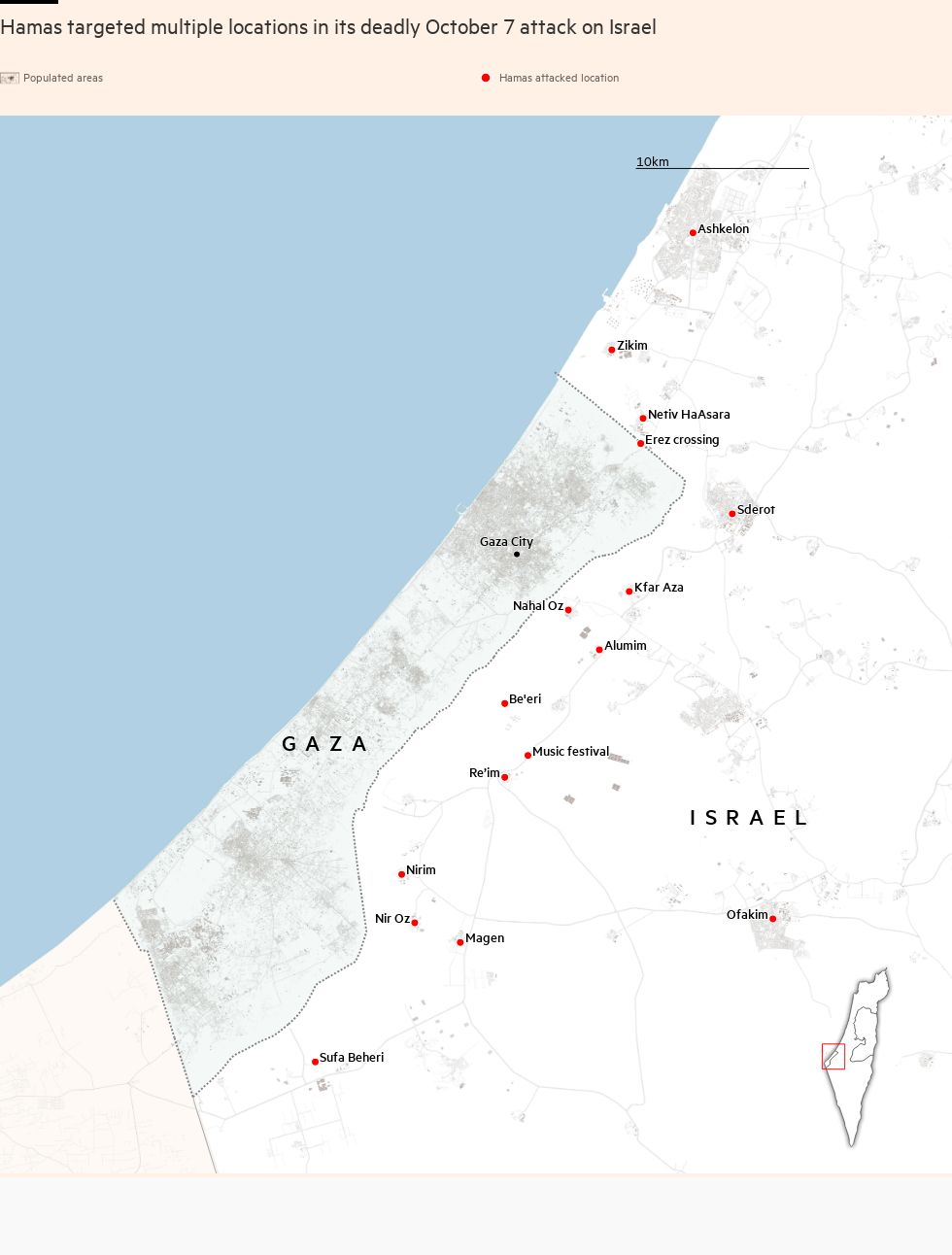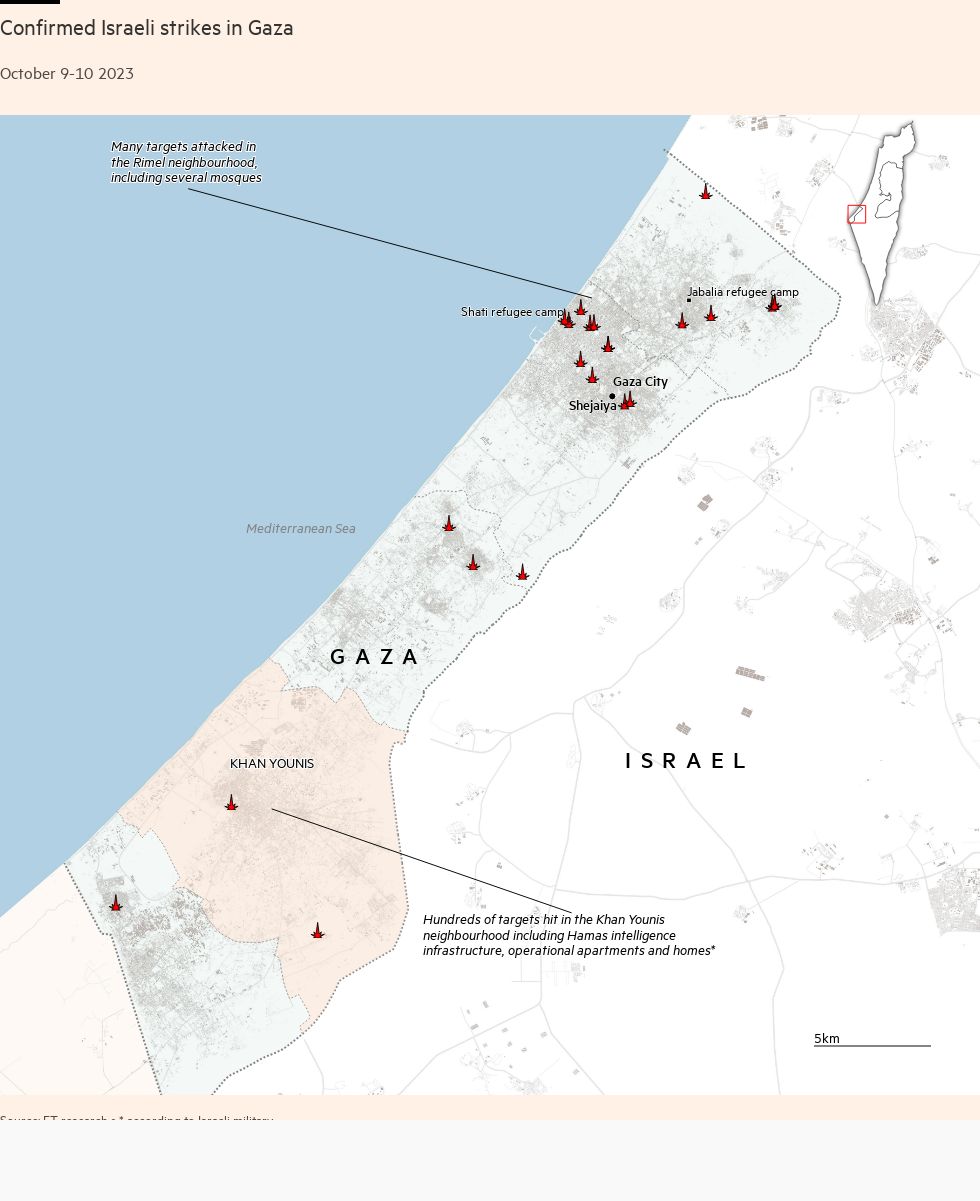Title: Unleashing Chaos: The Recent Israeli-Hamas Conflict Unraveled
Introduction:
The recent Israeli-Hamas conflict has escalated to unprecedented levels, leaving destruction and death in its wake. In this article, we will delve into the series of events that unfolded, shedding light on the magnitude of the attack and examining the responses from both sides. Through this comprehensive overview, we aim to provide a deeper understanding of the situation and offer insights into the complexities surrounding intelligence gathering and military preparedness.
Unprecedented Hamas Attack Sends Shockwaves:
Last Saturday, while Israel was asleep, Hamas militants launched a massive, multi-pronged attack on the country from the Gaza Strip, catching the Israeli security forces off guard. The assault, which coincided with the Jewish holiday of Simchat Torah, commenced with thousands of rockets fired at Israeli towns, triggering warning sirens and forcing citizens to seek refuge in air raid shelters. The Israeli military reported that over 4,500 rockets were launched over the weekend. While many were intercepted by the Iron Dome defense system, satellite images depicted fires and plumes of smoke rising from affected locations.
Simultaneous Land, Air, and Sea Attacks:
What made this Hamas attack distinct was the simultaneous multi-front assault. Hundreds of Hamas fighters breached the fortified barrier between Gaza and Israel by land, air, and sea. Disturbing images and videos circulated, revealing armed militants on motorcycles driving through breaches in the metal fence, bulldozers destroying sections of the barrier, and various explosives demolishing defensive positions. Moreover, the militants even employed motorized paragliders in an attack on the Supernova music festival near the Gaza border, turning the event into a harrowing massacre site.
Terrifying Consequences and Israeli Response:
After crossing the Gaza fence, armed Hamas fighters began targeting Israeli communities, carrying out executions, taking hostages, and attacking military sites. The aftermath of the attack has been devastating, with the death toll among Israeli civilians and soldiers exceeding that of the five-year Second Intifada. The Israeli army reported over 1,200 fatalities and 2,700 injuries, making it the deadliest attack on Israel since its establishment in 1948.
In response, Israeli Prime Minister Benjamin Netanyahu imposed a “full seat” on Gaza, mobilizing a record 300,000 reservists and ordering airstrikes on the strip. This robust response showcases Israel’s determination to protect its citizens and retaliate against what can only be described as a highly complex and well-coordinated Hamas offensive.
Critical Analysis and Reflections:
The severity and sophistication of the Hamas attack raise crucial questions about the intelligence gathering capabilities of the Israeli security services and the military’s level of preparedness for a large-scale assault. The fact that such a well-coordinated operation caught them off guard calls for a thorough examination of their methods and strategies.
It is essential to consider the broader context of this conflict, delving into the complexities of the Israeli-Palestinian issue, historical grievances, and regional dynamics. Only by assessing the root causes and underlying motivations can we hope to find sustainable solutions to prevent such devastating conflicts in the future.
Conclusion:
The recent Israeli-Hamas conflict stands as a stark reminder of the deep-rooted tensions and complexities at play in the Israeli-Palestinian issue. The sudden and highly coordinated Hamas attack caught Israel off guard, resulting in immense destruction and loss of life. Israel responded forcefully, but the aftermath necessitates a critical examination of intelligence gathering and military preparedness.
To truly understand the gravity of this conflict, it is crucial to explore the historical context and underlying motivations. By doing so, we can glean insights into how to de-escalate tensions and work towards a more peaceful and stable resolution in the region.
Summary:
The recent Israeli-Hamas conflict has been characterized by a concerted and unprecedented assault from Hamas militants on Israel. The attack involved thousands of rockets, simultaneous land, air, and sea assaults, and targeted Israeli civilians and soldiers alike. The Israeli response was forceful, with airstrikes and the mobilization of hundreds of thousands of reservists. The severity of the attack raises questions about intelligence gathering and military preparedness. Understanding the complexities of the Israeli-Palestinian issue and regional dynamics is essential in finding long-term solutions.
—————————————————-
| Article | Link |
|---|---|
| UK Artful Impressions | Premiere Etsy Store |
| Sponsored Content | View |
| 90’s Rock Band Review | View |
| Ted Lasso’s MacBook Guide | View |
| Nature’s Secret to More Energy | View |
| Ancient Recipe for Weight Loss | View |
| MacBook Air i3 vs i5 | View |
| You Need a VPN in 2023 – Liberty Shield | View |
Unlock Editor’s Digest for free
Roula Khalaf, editor-in-chief of the FT, selects her favorite stories in this weekly newsletter.
Latest situation
The bombing of Gaza continued and Israel warned about half of the population of the Gaza Strip to move from the north to the south of the enclave within 24 hours, according to the UN.
Following the massive Hamas attack last Saturday, the death toll among Israeli civilians and soldiers already exceeds that of the five-year Second Intifada in the early 2000s. Palestinian casualties have also increased rapidly since Israel began its retaliatory airstrikes.
Saturday October 7: progress of events
While much of Israel slept, Hamas militants launched an unprecedented multi-pronged attack on the country from the Gaza Strip at dawn. The Middle East’s most powerful security force was caught off guard.
Launched on the Jewish holiday of Simchat Torah, the assault began early in the morning with thousands of rockets fired at Israeli towns. The barrage triggered warning sirens in the south and center of the country, forcing citizens to flee to air raid shelters.

The Israeli military said Gaza-based militants launched more than 4,500 rockets over the weekend. Many were intercepted by Israel’s Iron Dome defense system, but satellite images showed fires and plumes of black smoke rising from some affected locations.
Hundreds of Hamas fighters attacked simultaneously by land, air and sea, repeatedly breaching the fortified barrier between Gaza and Israel.

Images and videos showed motorcycles carrying armed militants driving through a hole in a metal fence along the border and a bulldozer destroying part of the fence. Bombs, rockets and drones could also be seen blowing up the fence as well as defensive positions.

Militants used motorized paragliders to attack the Supernova music festival not far from the Gaza border, turning the two-day rave into a massacre site.

Gunmen chased young Israelis across the desert, shooting and kidnapping people and bringing them back to Gaza as hostages. The Israeli army did not react for hours, apparently taken by surprise by the attack. Hundreds of bodies were found there.

Attacks on Israeli cities
After crossing the Gaza fence, armed Hamas fighters began targeting Israeli communities in several locations, going door to door and taking hostages.
Images and videos show people dead in the streets after executions and residents, including women, children and the elderly, taken away.
The militants also attacked military sites.
More than 1,200 Israeli civilians and soldiers have died since Saturday and 2,700 have been injured, the Israeli army said. It was the deadliest attack on the country since its founding in 1948.
Israel’s response
Israeli Prime Minister Benjamin Netanyahu imposed a “full seat” on Gaza, calling in a record 300,000 reservists and ordering the strip pounded from the air.

The complexity of the Hamas attack is unlike anything Israel has seen in decades. This raises serious questions about intelligence gathering by the security services and the military’s preparation for an attack.
Visual and Data Team: Peter Andringa, Steve Bernard, Chris Campbell, Sam Carpenter, Lucy Rodgers And Alan Smith
Israel-Hamas War
—————————————————-



